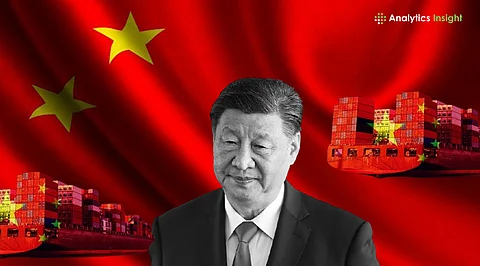China’s exports to the United States continue to demonstrate remarkable resilience, with approximately $1 billion worth of goods crossing the Pacific daily. This ongoing trade flow occurs despite the challenges posed by tariffs and escalating political tensions, reinforcing China’s leverage over global supply chains and enhancing President Xi Jinping’s position in trade discussions.
Export Resilience in the Face of Tariff Challenges
As the trade conflict enters its second year, recent data reveals that shipments from China to the US actually increased in September 2019 compared to the previous month. This growth is notable, considering total bilateral trade between the two nations has declined by double digits this year. Economists Chang Shu and David Qu from Bloomberg emphasize that China’s integral role in global supply chains provides it with significant bargaining power, particularly with US importers. Their analysis suggests that any attempts to realign production away from China will require years of effort, not just months.
The sustained strength of exports has come at a pivotal time, as Xi’s government prepares for another round of trade talks intended to extend the 90-day tariff truce that is set to expire in November 2019. In the third quarter alone, China exported over $100 billion worth of goods to the US, resulting in a substantial bilateral trade surplus of $67 billion. This surplus plays a critical role in supporting China’s domestic economic stability.
Creative Strategies Amid Changing Trade Dynamics
Chinese companies are employing innovative strategies to maintain their export levels, despite facing higher tariffs. Some businesses have begun rerouting shipments through countries such as Mexico and Vietnam, allowing importers to benefit from lower customs valuations and evade full tariff payments. According to strategist Zhaopeng Xing from ANZ, this practice continues partly because US customs authorities lack the capacity to thoroughly monitor every transaction.
Additionally, China’s e-commerce exports remain robust. Following the closure of the “de minimis” duty-free loophole in May, the country shipped approximately $5.4 billion worth of small parcels to American consumers. Furthermore, business-to-business (B2B) shipments surged to $201 million in September, indicating that Chinese exporters are adapting by sending larger quantities before breaking them down in the US.
While the overall volume of US-bound exports from China has decreased, particularly for products like gaming consoles and televisions as manufacturers shift to Southeast Asia, the ability to sustain $1 billion in daily exports underscores the limitations of US tariff power. As trade dynamics evolve, Beijing retains significant leverage, which Xi Jinping is expected to utilize in the upcoming negotiations.
As the trade talks approach, the implications of China’s sustained export capacity will be pivotal not only for future trade relations but also for the broader economic landscape in both nations.
